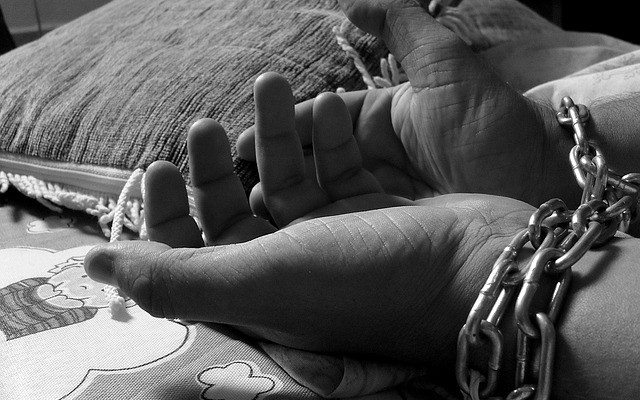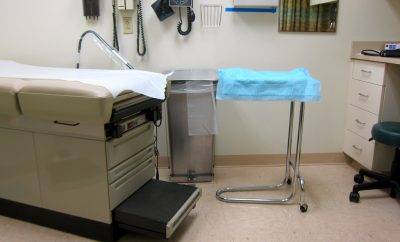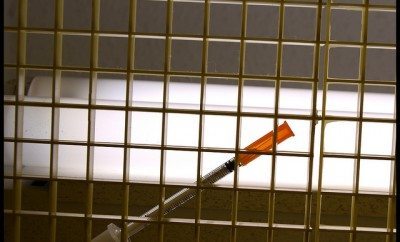
Crime
Is Rape Part of the Sentence?
In 2011 there were 8,763 allegations of sexual victimization in American prisons, jails and other adult correctional facilities, according to the Bureau of Justice Statistics’ (BJS) annual report on the sexual victimization of inmates.
The data used to compile this report was drawn from a random sample “of not less than 10 percent of all federal, state, and county prisons and a representative sample of municipal prisons […] includ[ing] at least one prison from each state.” With 2.2 million people currently incarcerated in the United States, the sample number of allegations represented in the BJS report does not do justice to the true number of inmates who experience sexual victimization, as 90 percent of all federal, state, and county prisons (and subsequently their inmates) were excluded from the data used to compile the report.
These findings do, however, follow an upward trend in recent years, with 7,855 complaints filed in 2009 and 8,404 complaints filed in 2010. Of these allegations, 51 percent involved nonconsensual acts or abusive sexual contact between inmates, while the other 49 percent were sexual misconduct or sexual harassment involving prison staff. It was conservatively estimated by the Department of Justice (DOJ) that approximately 1 in 10 inmates were assaulted in 2012, and as prison populations continue to grow, it can be assumed that this number has only increased in the past two years.
The Prison Rape Elimination Act:
This report comes out a little more than a decade after the Prison Rape Elimination Act (PREA) was passed in 2003 with unanimous support from both parties in Congress. The PREA is meant to address the problem of sexual abuse of any person who finds him/herself imprisoned or detained by a United States correctional agency. The act works to “develop and implement national standards for the detection, prevention, reduction, and punishment of prison rape” in both public and private facilities.
Although the PREA was signed in 2003, these national standards will be going into effect for the first time in August, 2014. Just last month, the governors from each state had to submit a certification that they were either in full compliance with the national standards developed by the National Prison Rape Elimination Commission (NPREC) or that they were actively working towards full compliance.
Despite the fact that the act was passed through Congress unanimously, there are some states that are refusing to comply with the PREA national standards, citing that they impose too great of a financial burden, undermine state rights, or that their states already have effective standards in place for the prevention of rape.
The governors of Arizona, Florida, Idaho, Indiana, Nevada, Texas, and Utah have all formally informed U.S. Attorney General Eric Holder that they will not try to meet PREA standards, however the vast majority of American states and territories have promised that they will work towards full compliance, devoting at least 5 percent of their grant funding to accomplish this goal.
At the moment, only two states (New Hampshire and New Jersey) have correctional facilities that are fully compliant with PREA standards. Considering the fact that Brenda Smith, a former commissioner of the NPREC, stated that the standards are a far cry from unreachable, it is rather surprising that only two states can boast that they are up to code.
If protecting prisoners from sexual abuse is the bare minimum that states can do, then the disturbing statistics in the recent BJS report show that we still have a long way to go before the issue of prison rape can begin to be resolved.
What the Statistics Show:
Though attitudes are certainly changing – the very existence of the PREA is proof of that – the opinions of people like Governor Rick Perry, who claims that existing procedures are more than adequate, reflect an awful truth: most institutions are not as “hard on prison rape” as they pretend they are.
Despite the fact that any sexual contact between staff and inmates is illegal (even if it “appeared-to-be” willing) only 78 percent of staff perpetrators were fired or resigned according the BJS report. This means that 22 percent of these staff members still hold their jobs and continue to work in plain view of their victims.
As if the fact that 49 percent of all of these allegations involve prison staff is not bad enough, only 45 percent of the staff offenders were arrested, referred for prosecution or convicted following the incident.
This means that more than half (55 percent) of staff perpetrators faced no legal consequences for substantiated allegations of sexual misconduct towards prisoners. Even the perpetrators of inmate-on-inmate sexual victimization only faced legal consequences 48 percent of the time.
What all of these numbers mean is that more than half of all substantiated allegations of sexual victimization in prisons do not result in justice for their victims, even if the incidents are reported, investigated, and found to be true.
These statistics do not even take into account the number of unreported instances of sexual misconduct, nor the number of victims that suffer in silence out of unwarranted shame or legitimate fear of retaliation, but they do paint a rather chilling picture for those of us that are fortunate enough to not be behind bars.
Why it Matters:
It is important to remember that while these crimes are happening in prisons, they have long reaching effects that expand well beyond prison walls.
Prison rape endangers public safety by making brutalized inmates more likely to commit other crimes when they are released. Victims of prison rape also suffer from severe physical and psychological effects that they carry with them after they served their time. This makes it difficult for inmates to reintegrate back into society and hold down a steady job, making them far more likely to become either homeless or require government aid.
With at least 650,000 inmates released each year, this is a problem society will continually have to confront. Although the PREA is a step in the right direction, we as a society have to be prepared to do more than just the “bare minimum” to protect prisoners from sexual victimization at the hands of both staff and their fellow inmates.
No matter the crime, rape is never part of the sentence.
—
Nicole Roberts (@NicoleR5901) a student at American University majoring in Justice, Law, and Society with a minor in Mandarin Chinese. She has a strong interest in law and policymaking, and is active in homeless rights advocacy as well as several other social justice movements. Contact Nicole at staff@LawStreetMedia.com.
Featured image courtesy of [sammireachers via Pixabay]








Comments